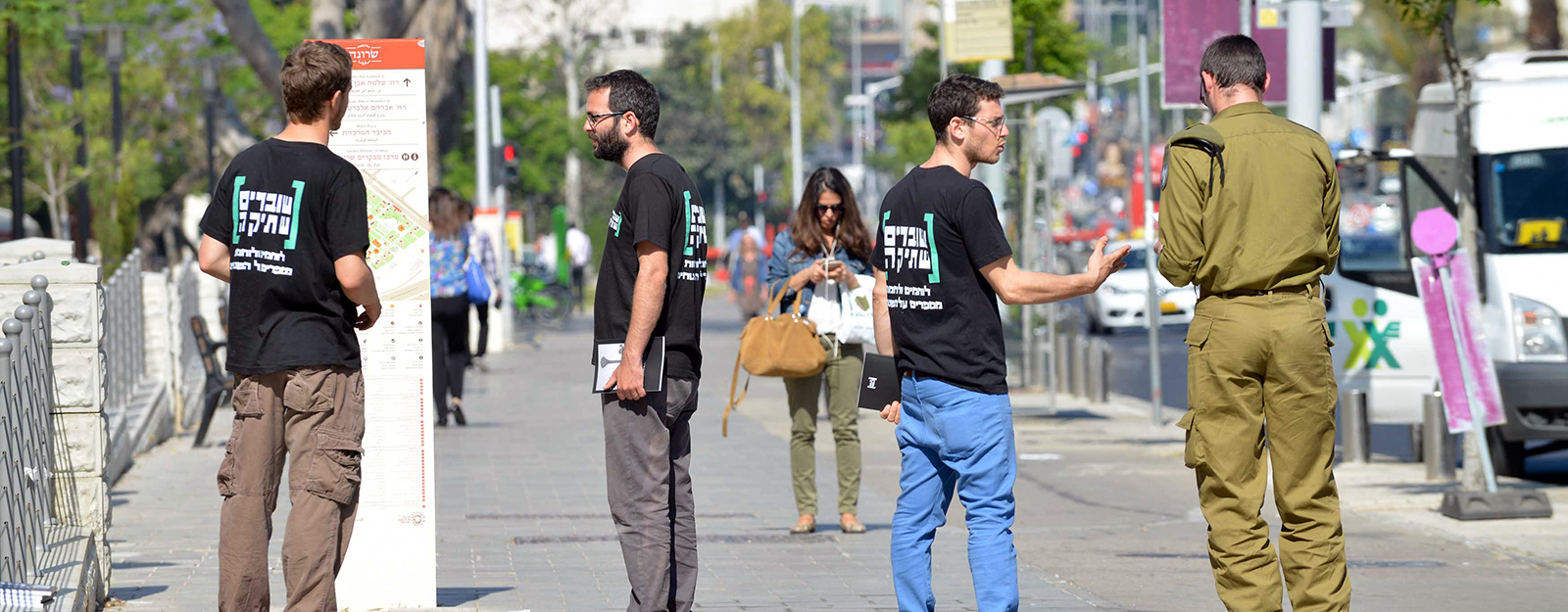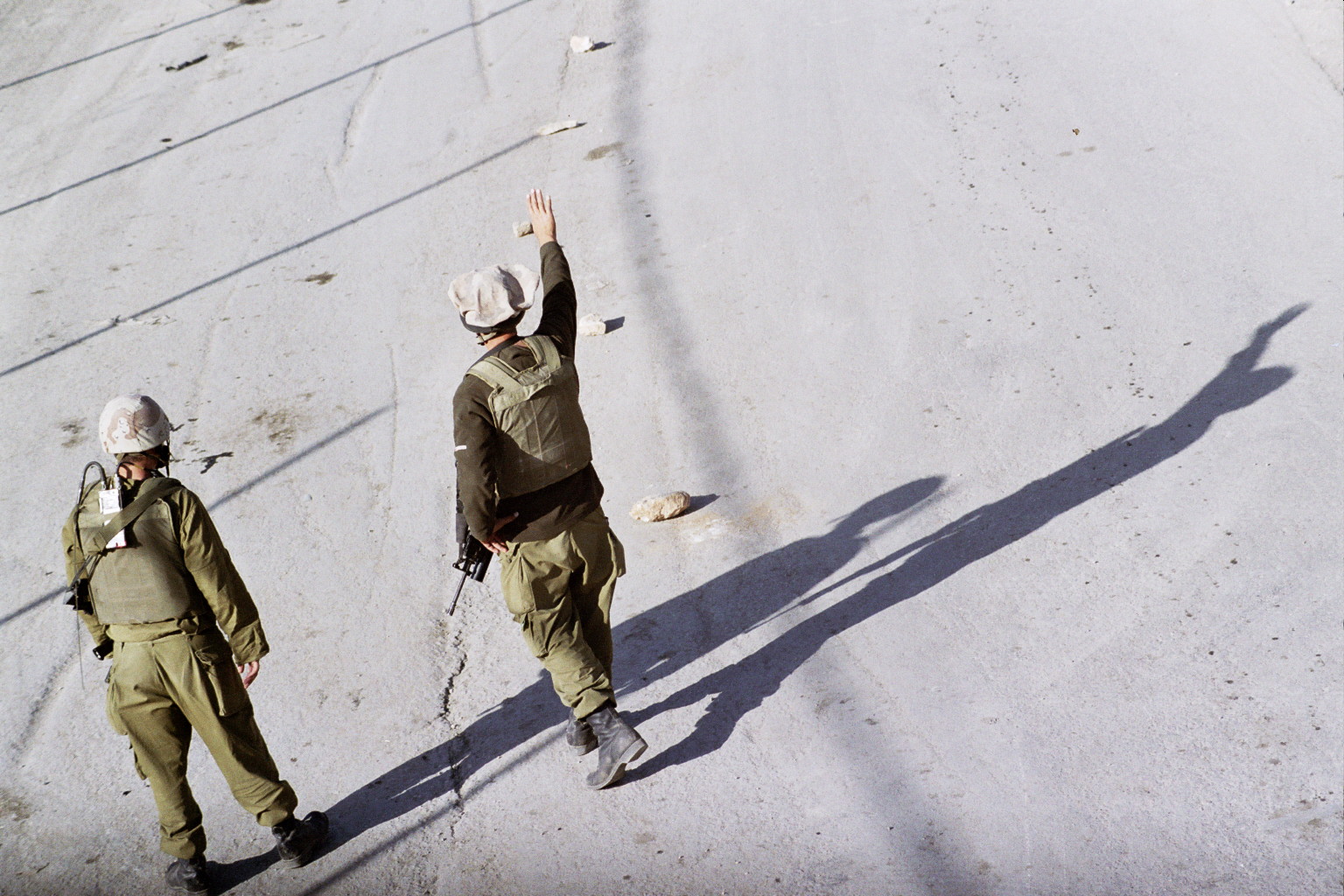How many shells did each tank carry on such an operation? Less than the maximum, because we knew it wasn’t Lebanon but urban warfare.
You knew that in advance. In the Gaza Strip, it's urban warfare. Half a tank has to be kept free for infantry troops… In Lebanon, the tanks ride 'full'. In Gaza, they're half loaded with shells.
How many shells is that, approximately? I'll tell you exactly. 29.
In every tank? Yes.
What else? 0.5, machine guns, mortars, grenades.
Ammo crates, I assume? Crates, mortars.
What kind of mortar shells? Explosives, illumination shells, and there were phosphorus shells, too.
Was that part of the combat doctrine? As far as I understood, we weren’t supposed to use them.
The question is what 'not supposed to use them' means. When you prepare for an operation, you know you’re taking them. It was my first time. I was in favor of taking everything we had. We didn't know exactly what it was.
Did you know what it was? Had you undergone training? In training we didn’t touch stuff like that, in training you hardly touch mortars. We only learned how to fire, and nothing about the damage they cause and when they should be used – that’s already up to the commander. …
What about rules of engagement? They were very clear and helped us feel confident.
What were they? Fire upon entry – the instructions changed over time – but upon entry, it was simply about not taking any risks. Opening fire at suspect spots, at the commander's discretion.
What could a suspect spot be? Say, for example, that there are tanks on regular detail holding the line in Gaza. They need a brigade commander to authorize firing a shell. In our case, you only needed a tank commander to authorize it. He could fire shells wherever he saw fit – any commander's judgment, any tank. The order was to fire at suspect spots upon entry. Intelligence marked spots that were likely to contain anti-tank weapons, you scan in every direction, and any spot that seems suspect – shoot. A suspect spot is any place you think might be sheltering an anti-tank crew.
Behind a building, for example? Anywhere. Gaza is a paradise for those crews. There are buildings dozens of floors high, with hundreds of windows, any of which can be used to fire an RPG. Even with all the scanning done by all the tanks, you can’t possibly cover all the spots from which you could be shot, so it was also preventive fire. Even if there is no movement in that direction – you fire to prevent any chance of anyone firing at you.
And you really fire a lot to begin with. We went in, and at first we weren’t fired at all when we entered. Our mission was on the move, the commander told us that our mission was to reach the sea, simply cross Gaza, [and reach a location] south of the city. Not through the city, but through its southern suburbs. You fire a lot. At first there was only sand, there were lots of infantry troops entering on foot and we had to be careful, because an infantryman and a terrorist look the same on night vision devices, so we were very cautious. When the Operations Branch confirmed that there weren’t supposed to be any more infantry soldiers around, we opened fire.
Only shells? No, the whole lot. MAG machine guns, 0.5 machine guns, shells. Firing at any suspect spot, suspect antenna, anything that looked like a Hamas HQ. Basically, our target was Netzarim. Nowadays there’s a Hamas school there. Before we went in, the air force flattened the school, but there were still remains around it, and verified information that there were tunnels in the area.
You went in, fired, and you say there was zero resistance? Yes. One of the claims, and I pretty much agree, is that it was because we entered with such enormous fire power. There may have been dozens of crews waiting for us there, but when 100 tanks rain fire… the whole area was shaking.
You said the rules of engagement were very clear. I'm trying to understand, what are considered suspect spots during the operation? It was clear that if we see a suspect figure… When we were going in, it was unlikely that someone would be running towards the tanks rather than towards the sea. So if anyone was seen running towards the tanks – it was clearly a terrorist. That's pretty logical.
If bombings are going on for days and for some reason, I (as a resident) have chosen not to run away, I might try to get out now. Was the instruction specifically regarding anyone running towards the tank, or just for anyone armed? The instructions were that no matter who it is, at a range of less than 100 meters [from the tank], you shoot him. Naturally, you shoot preventive shots first, and if you can yell, you yell, shoot in the air.
But you didn't really experience such cases. Before we went in, we were afraid of encountering anti-tank fire and women and children running all over the place. But when we went in, we found ourselves in a ghost town. Still, we were afraid that at any moment someone would jump out at us, so we fired. We fired seven shells in less than one hour when we were there. Now think about it – there are another ten tanks there beside us, that's dozens of shells. The battalion commander fired a lot, too. Firing into orchards. There were places where I didn’t agree with my commander, where it seemed silly to be firing all over the place.
Like where? He had this thing with antennas, he suspected them of being on top of headquarters. In hindsight, if I were a commander, I might have fired too, because it was allowed and no one was taking any risks.









 testimonies
testimonies  media & content
media & content 










 When 100 tanks rain fire… the whole area was shaking
When 100 tanks rain fire… the whole area was shaking 

 terms of use & privacy policy
terms of use & privacy policy